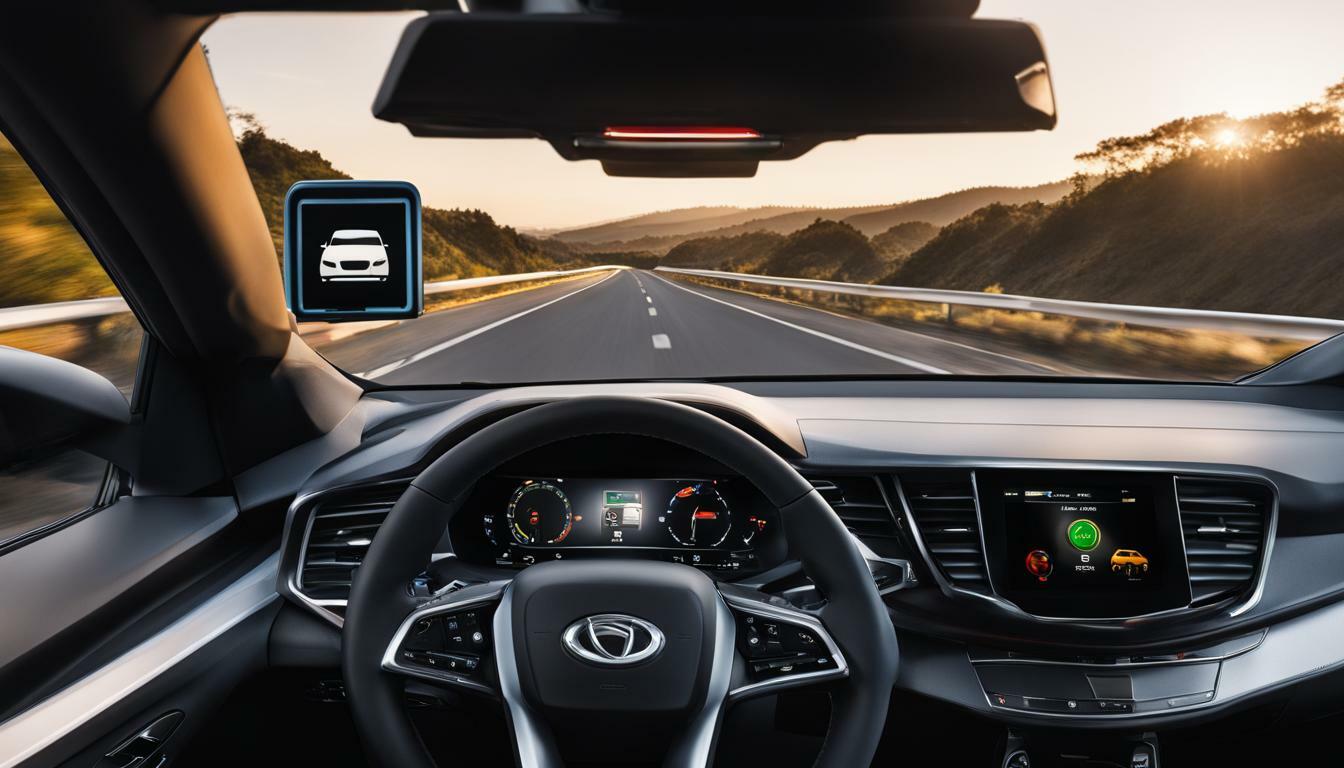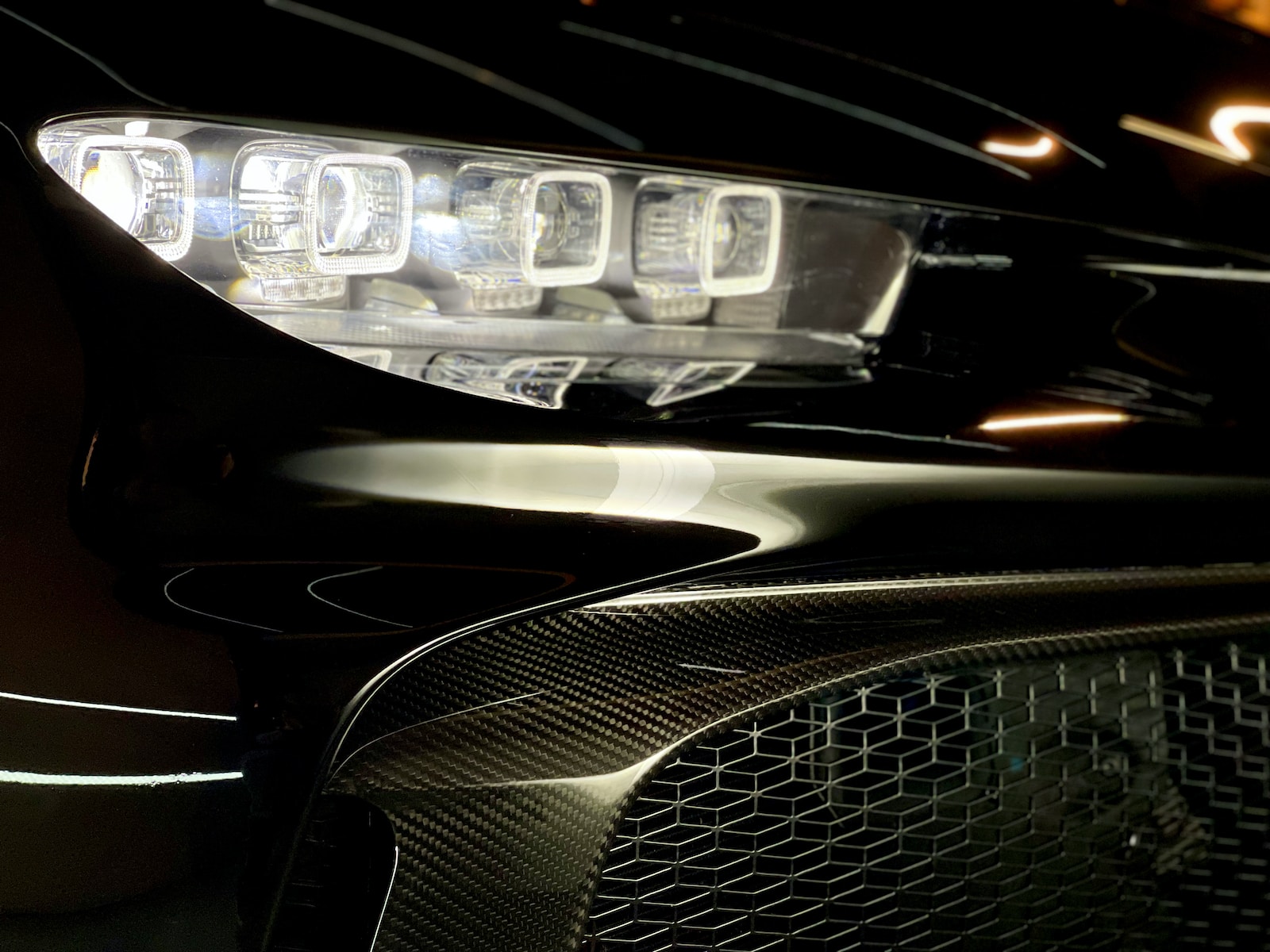When it comes to driving, safety should always be a top priority. That’s why advances in technology have made it possible for drivers to incorporate helpful gadgets to enhance their driving experience. Two such technologies are rearview cameras and parking sensors.
While both technologies serve a similar purpose – assisting drivers in parking and reversing safely – they function differently. It’s essential to understand the difference between these two technologies to determine which one is best for you.
Key Takeaways
- Rearview cameras and parking sensors are two technologies that help drivers park and reverse safely.
- While both technologies serve a similar purpose, they function differently.
- Understanding the differences between rearview cameras and parking sensors is essential in determining which technology best suits your needs.
Rearview Cameras
When it comes to enhancing visibility and safety while reversing or parking your vehicle, two technologies that come to mind are rearview cameras and parking sensors. While both assist drivers in maneuvering their vehicles, they operate differently and serve different purposes. Let’s take a closer look at rearview cameras and how they compare to parking sensors.
Rearview Camera versus Parking Sensor
Rearview cameras, also known as backup cameras, are camera systems that are mounted at the back of your vehicle. They capture a live video feed of your surroundings in real-time and display it on a screen inside your car. This system allows you to see any obstacles that may be behind you, making it easier to park or reverse safely. On the other hand, parking sensors are ultrasonic sensors that use sound waves to detect obstacles in your vicinity. They alert you to obstacles within a certain range of your vehicle through beeps or visual indicators.
While both technologies serve the same basic function of helping you park and reverse safely, they have their own unique advantages. Rearview cameras offer a clear and detailed real-time view of your surroundings, which makes it easier to gauge distances and angles. Parking sensors are more effective at detecting objects that are close to your car and can alert you even before they are visible in your rearview mirror.
Rear Parking Assist
Rear parking assist, also called rear park assist or parking assist, is a feature that is available in many modern vehicles. It uses rearview cameras and/or parking sensors to provide drivers with a more comprehensive view of their surroundings. When you engage reverse gear, your rearview camera or parking sensors activate automatically, alerting you to any obstacles in your path.
Backup Camera
A backup camera is a type of rearview camera that is designed specifically for reversing. It is mounted at the back of your vehicle, usually above the license plate, and provides a clear view of the area behind you. Some backup cameras come with additional features such as night vision and wide-angle lenses, which can further enhance your visibility. With a backup camera, you can confidently reverse your vehicle without worrying about unseen obstacles.
Overall, rearview cameras are an excellent addition to any vehicle, especially if you need to parallel park or reverse in a tight space. They provide you with a clear view of your surroundings, reducing the chances of accidents and making parking a breeze. While parking sensors can be helpful in detecting obstacles that are close to your car, they are not a substitute for a good rearview camera system.
Parking Sensors
If you often find yourself reversing or maneuvering into tight parking spots, parking sensors can be a useful addition to your vehicle’s safety features. These sensors work by emitting ultrasonic waves that bounce off nearby objects, detecting their proximity and providing an alert to the driver. The majority of cars come equipped with reverse parking sensors, which are located on the rear bumper. Some vehicles may also have parking sensors on the front bumper or both bumpers, making it easier to navigate in tight spaces.
One of the main advantages of parking sensors is their ability to detect obstacles in blind spots, especially when reversing. This can prevent potential collisions and minimize the risk of accidents, improving overall safety. Parking sensors are also convenient for drivers with limited visibility or those who struggle with parking in tight spaces. By providing an audible warning to the driver, parking sensors offer added security when navigating in crowded areas.
While parking sensors may not be as versatile as rearview cameras, they can serve as an excellent complementary tool. By using both technologies simultaneously, drivers can benefit from increased visibility and enhanced safety. Ultimately, choosing between rearview cameras and parking sensors depends on your personal preference and driving needs.
In the next section, we will explore how rearview cameras work and their respective benefits.
How Rearview Cameras Work
Rearview cameras, also known as backup cameras, provide drivers with a clear view of what is behind their vehicle while reversing or parking. The camera captures images of the area behind the car and transmits them to the display screen in the dashboard. This display screen is usually located on the center console, but some vehicles have it integrated into the rearview mirror or even the windshield.
The camera itself is usually mounted on the rear of the vehicle, either in the center or on one of the sides. It is designed to withstand the elements and vibrations caused by driving. The camera lens is wide-angle, allowing it to capture a broad view of the area behind the vehicle.
The camera is activated when the driver shifts into reverse gear, triggering the display screen to activate. Some vehicles also have an option to activate the rearview camera manually.
The display screen shows the image captured by the camera, typically with guidelines overlaid to assist the driver in judging distances. Some systems may also show warnings if an object is too close to the vehicle.
There are two primary types of backup camera systems: wired and wireless. Wired systems are connected to the vehicle’s electrical system, while wireless systems use radio waves to transmit the image signal from the camera to the display screen. Wired systems tend to be more reliable, while wireless systems are easier to install and may be more convenient in some cases.
Overall, rearview cameras provide drivers with an extra level of safety, particularly when reversing or parking in tight spaces. They are an excellent investment for any driver concerned with minimizing the risk of accidents.
How Parking Sensors Work
Parking sensors are a type of technology that assist drivers in detecting obstacles while parking or reversing their vehicles. They use sensors that emit ultrasonic waves, which bounce off objects and return to the sensor. Based on the time taken for the waves to return, the system can calculate the distance between the vehicle and the object.
There are two types of parking sensors: front and rear. Front sensors are typically located in the front bumper, while rear sensors are located in the rear bumper. Some vehicles have both front and rear sensors, while others only have rear sensors.
Reverse parking sensors are an extremely useful feature because they help drivers park in tight spaces and avoid collisions with other vehicles or objects. They work by alerting the driver if they get too close to an object. Most parking sensors emit an audible warning sound, while some newer models may also have a visual display or haptic feedback system.
One of the advantages of parking sensors is their ability to detect objects in blind spots, which drivers may not be able to see in their mirrors. Parking sensors can also be useful for drivers with limited visibility, particularly when backing up at night or in inclement weather.
Benefits of Rearview Cameras
Rearview cameras, also known as backup cameras, offer numerous benefits to drivers. They are especially useful in reversing and parking situations, where visibility tends to be limited. Here are some advantages of using rearview cameras:
- Improved visibility: Rearview cameras provide a clear view of the area behind the vehicle, making it easier to see obstacles and avoid accidents.
- Enhanced safety: By improving visibility, rearview cameras reduce the risk of accidents, especially in situations where drivers have limited visibility.
- Minimized risk of property damage: Rearview cameras help drivers avoid collisions with objects, such as poles, walls, and other vehicles, which can cause damage to the car and property.
- Complements parking sensors: Although rearview cameras and parking sensors differ in their functionality, they complement each other and provide drivers with a more comprehensive view of their surroundings.
In summary, rearview cameras enhance driver safety, minimize the risk of accidents and damage to property, and provide drivers with a more comprehensive view of their surroundings, especially during reversing and parking situations.
Advantages of Parking Sensors
If you’re debating whether to install parking sensors in your vehicle, here are some benefits to consider:
- Improved safety: Parking sensors can help you avoid collisions by detecting obstacles that may be hidden from view. This is particularly useful in tight spaces or when backing up.
- Convenience: With parking sensors, you no longer have to rely solely on your mirrors and rearview camera. The sensors can accurately measure distances between your vehicle and nearby objects, making parking a breeze.
- Increased confidence: For drivers with limited visibility, parking sensors can provide an added layer of assurance by alerting them to potential hazards they may not have been aware of.
- Time-saving: Parking sensors can help you park more quickly and efficiently, reducing the amount of time you spend circling the block in search of a spot.
Overall, parking sensors are a valuable tool for any driver looking to improve their safety and convenience behind the wheel. While they may not be necessary for everyone, they can be particularly helpful for those who struggle with parking or have difficulty seeing clearly out of all angles of their vehicle.
Conclusion
Both rearview cameras and parking sensors offer distinct advantages in helping drivers avoid collisions while reversing and parking. Rearview cameras provide a clear visual display of the area behind the vehicle, making it easier for drivers to reverse and park accurately. Parking sensors, on the other hand, alert drivers to obstacles in blind spots, making it possible to park in tight spaces safely.
While both technologies can help drivers avoid collisions, each has its unique features and benefits. Rearview cameras provide a more comprehensive view of the surrounding environment, allowing drivers to identify potential obstacles quickly. Parking sensors, on the other hand, are ideal for detecting objects in blind spots, which may not be visible even with a rearview camera.
If you’re considering installing a rearview camera or parking sensor system in your vehicle, it’s essential to take into account their individual features and functionality. Ultimately, the choice between rearview cameras and parking sensors will depend on your specific needs and preferences.
FAQ
Q: What is the difference between rearview cameras and parking sensors?
A: Rearview cameras provide visual assistance by displaying a live feed of the area behind your vehicle, while parking sensors use sensors to detect obstacles and provide audio or visual alerts.
Q: How do rearview cameras work?
A: Rearview cameras capture images using a camera mounted on the back of your vehicle. These images are then displayed on a screen inside the vehicle, providing you with a clear view of what’s behind you while parking or reversing.
Q: How do parking sensors work?
A: Parking sensors use ultrasonic or electromagnetic sensors to detect obstacles around your vehicle. These sensors emit signals that bounce off objects and measure the distance, alerting you with audio or visual warnings if you’re getting too close to something.
Q: What are the benefits of rearview cameras?
A: Rearview cameras improve visibility, making it easier to see obstacles, pedestrians, or other vehicles behind you. They enhance safety by reducing blind spots and minimizing the risk of accidents during reversing or parking situations.
Q: What are the advantages of parking sensors?
A: Parking sensors are especially useful in tight parking spaces, as they provide real-time alerts when you’re nearing an obstacle. They can detect objects in blind spots, offering an added level of safety and convenience for drivers with limited visibility.
Q: Can I use a rearview camera along with parking sensors?
A: Yes, many vehicles come equipped with both rearview cameras and parking sensors. Using them together provides an extra layer of safety and makes parking and maneuvering easier.
Q: Do I need to install a rearview camera or parking sensors myself?
A: It depends on your vehicle. Some newer vehicles come with pre-installed rearview cameras and parking sensors. If your car doesn’t have them, you can consider getting them installed by a professional or using aftermarket options available.
Q: Which technology should I choose, a rearview camera or parking sensors?
A: The choice depends on your personal preference and needs. Rearview cameras provide live visual assistance, while parking sensors rely on audio or visual alerts. Consider factors such as your driving habits, parking challenges, and visibility requirements to make an informed decision.
 Skip to main content
Skip to main content


